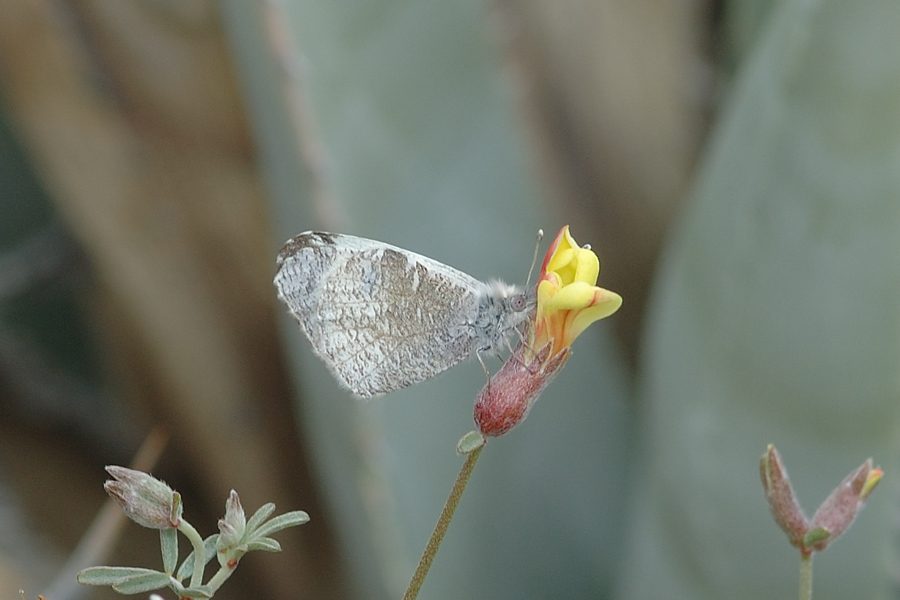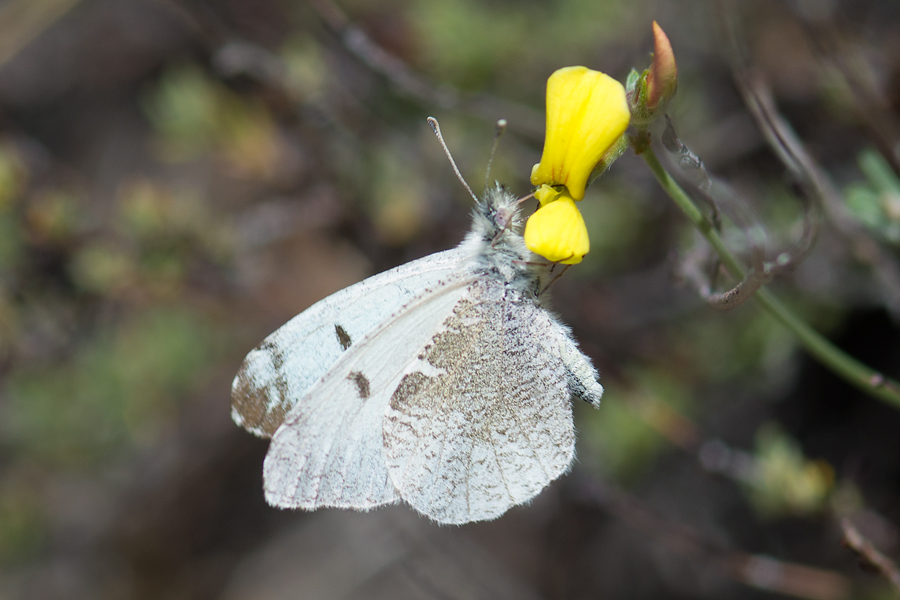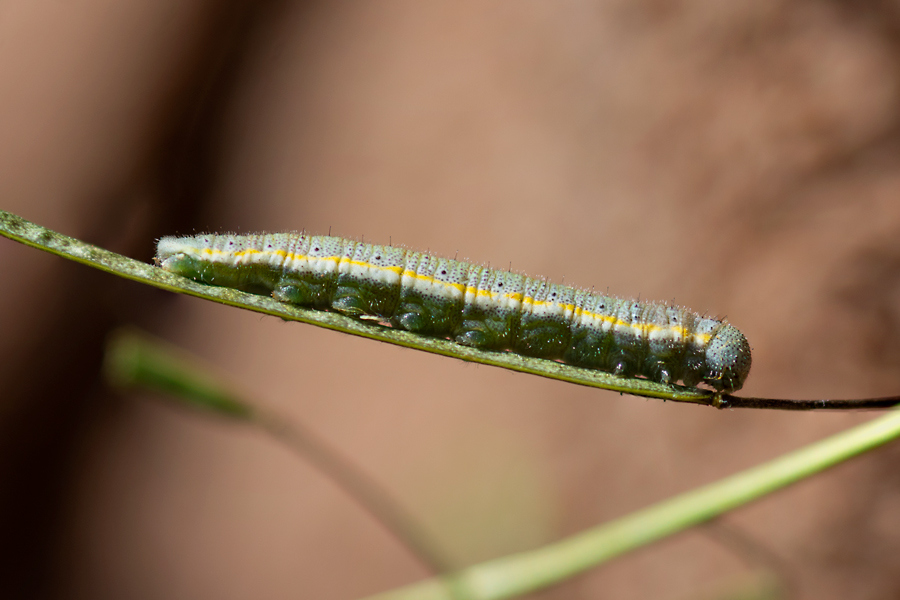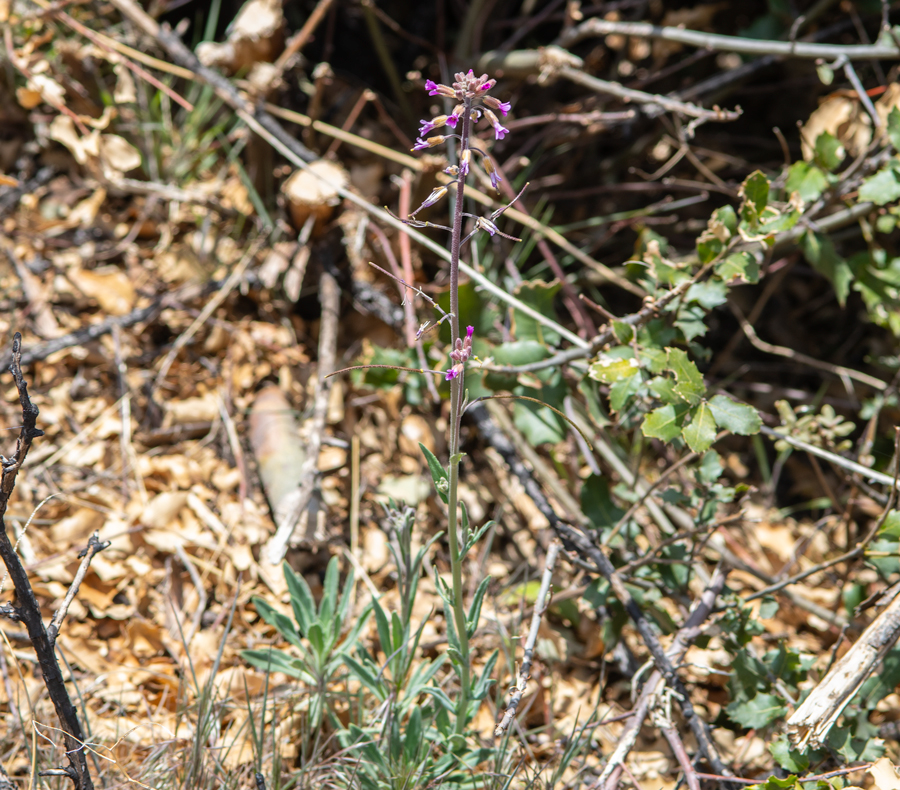Anthocharis lanceolata desertolimbus
Desert Edge Gray Marble
This subspecies was named in the Systematics book in 1998, and is distinguished from australis by its smaller size, and by a tendency for the ventral hind wings to have a darker basal half and a lighter outer half. The dark basal half is not as dark as with australis, most often but not always. The qualities separating these subspecies are best seen with a series of specimens side-by-side. At any rate, they are easy to distinguish from other whites in the area.
Desertolimbus flies in one brood, generally in March and early April. The host plant mentioned in the original description is Boechera perennans. A good place to see this butterfly is Cactus Spring Trail in Riverside Co. The subspecies is a Colorado desert-edge inhabitant from around Palm Springs down into Mexico.



